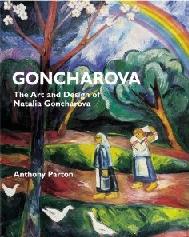A contemporary of Picasso, Matisse and Kandinsky, Goncharova is now recognised as one of the leading Russian artists of the twentieth century. This book traces the development of her art from its impressionist origins, through a provocative phase of 'primitive' style paintings on peasant themes to highly innovative abstract works that rivalled the most daring experiments of the Cubists and Futurists. As a woman artist she was galvanised by gender issues and addressed these directly in her work. In both her paintings and her behaviour she questioned accepted conventions and scandalised Russian society. Arrested in 1909 on the grounds of the 'pornographic' content of her paintings, accused of heresy against the Orthodox Church in 1914 because of her religious work and branded a Futurist because she walked about in public with a painted face, her large-scale retrospective in Moscow in 1913, in which she exhibited over 700 works, demonstrated to public and critics alike that she was, unquestionably, one of the greatest painterly talents that Russia had ever produced.
In 1914 Diaghilev, the director of the famous "Ballets Russes" invited Goncharova to make designs for The Golden Cockerel which was staged at the Paris Opera. The staggering success of this production opened up new creative horizons for her and she remained in Paris to become one of Diaghilev's 'resident' designers. Her work of this period reveals her gifts not only as a superb stage designer but also as a designer of women's fashions for the haute-couture industry of Art Deco Paris. Her work is now in the collections of museums and galleries across the world and is so highly sought that she has achieved the highest sale price ever recorded at auction for a woman artist.
Contents: Life and work in Moscow, Impressionism and Symbolism, Goncharova and gender, Neo-primitivism, Abstraction, futurist books, life and work in Paris, designs for the stage, fashions and textiles, graphic work, later paintings.

(0 Comentarios)